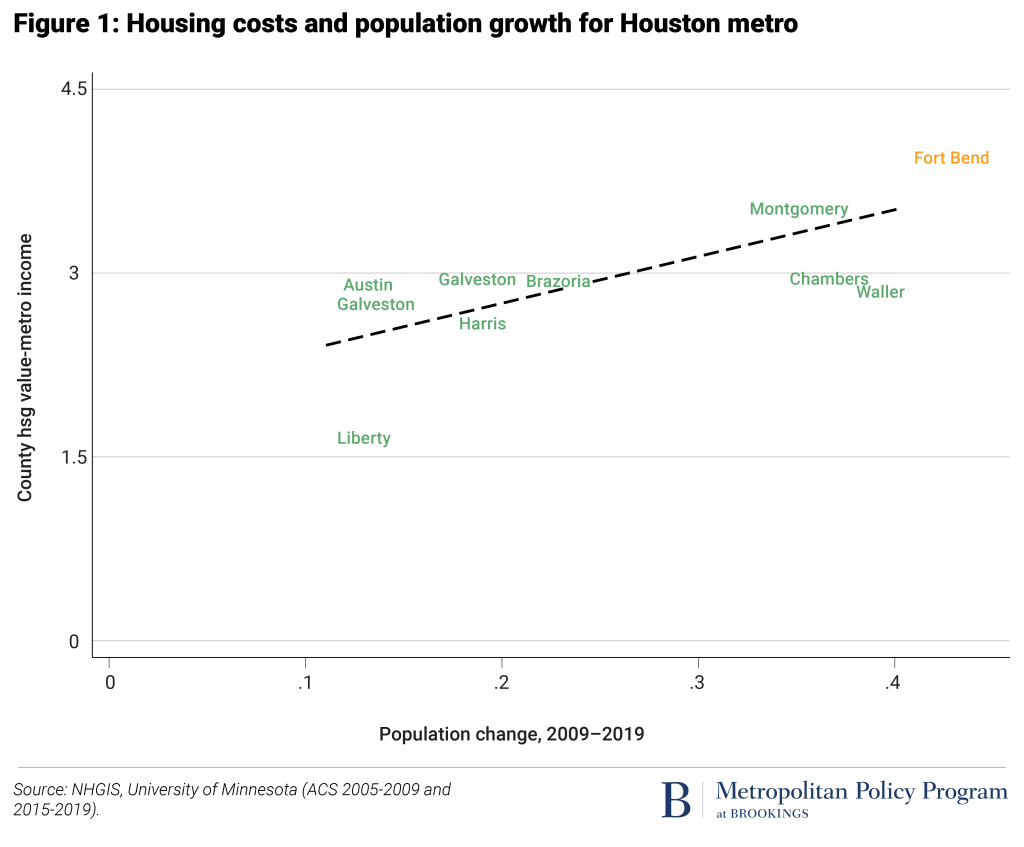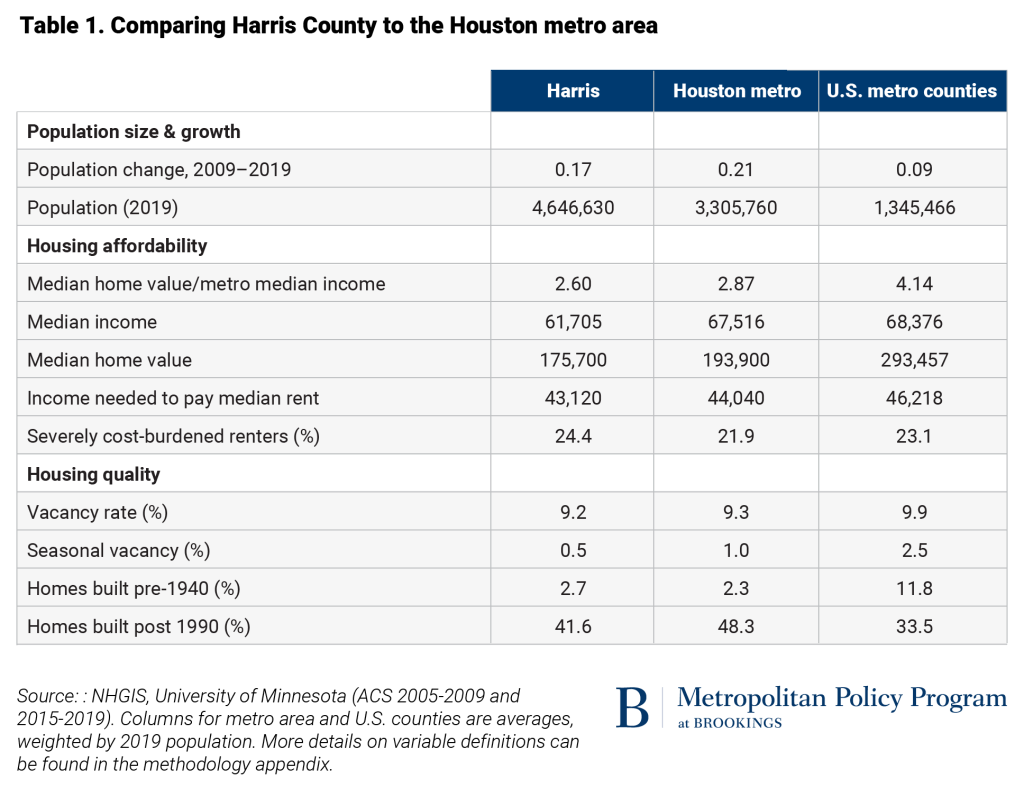
The housing policy matchmaker
Harris County, Texas, is a moderate-cost, fast-growing county located in a moderate-cost, fast-growing metro area (Houston). All nine counties in the Houston metro area experienced positive population growth between 2009 and 2019. Seven of the nine counties have housing value-to-income ratios in the healthy range (2.5 to 3.5).

To develop a more complete picture of housing market conditions in Harris County, we draw on a broader set of metrics that capture demand, affordability of both owner-occupied and rental housing, and housing quality (Table 3).

- Harris County’s population growth rate, 0.17, is slightly below that of the average county in the Houston metro area, but well above the national average. Fast population growth drives the demand for additional housing.
- The typical household in the Houston, Texas metro area would have to pay 2.6 times their annual income to purchase the median home in Mercer County. Home value-to-income ratios between 2.5-3.8 are considered healthy.
- Households earning less than $43,120 (or 64% of the metro area median income) would have difficulty paying rent for the median rental home in Harris County, while spending no more than 30% of their income on rent. While middle-income households in the metro area can afford median rent in Harris County, low-income households in the region will fall below this threshold.
- 24.4% of renters in Harris County are severely cost burdened, meaning they spend more than half their income on rent. That is above the severely cost-burdened share for the entire Houston metro area and slightly above the national average.
- The vacancy rate, 9.2%, is average. Vacancy rates of 6-10% reflect a good balance between housing supply and demand.
- The housing stock is new relative to the U.S. overall: 2.7% of homes were built prior to 1940, while 41.6% were built after 1990. New housing is generally higher quality than older homes and more expensive to buy or rent, while having lower maintenance costs.
Recommended policy solutions:
Harris County’s overall housing market is healthy. Population has grown rapidly, an indicator of strong demand, while housing supply has kept pace with demand. Housing value-to-income ratios and vacancy rates are within healthy ranges. These metrics do not indicate the need for substantial changes in county-level housing policies other than increasing financial support for low-income residents.
Monitor conditions for early warning signs. Rapidly rising prices or rents may indicate a tightening in supply, even if value-to-income ratios are still moderate. Slower population growth and softening prices can signal weaker economic conditions. Monitoring changes in key metrics—population change, home value-to-income ratios, and vacancy rates—over time can help local governments identify and address incipient changes to before they become urgent problems.
Expand vouchers or income supports for low-income renters. Even in communities where enough housing is built to accommodate increased demand, market-rate housing remains unaffordable to many low-income households. The poorest 20% of households everywhere in the U.S. spend more than half their income on housing, well above the threshold HUD defines as affordable. Only one in four eligible households receives federal rental assistance, including vouchers and public housing. Local governments that have sufficient resources can supplement these programs through locally funded rental vouchers or direct income supports. These programs require an ongoing funding source; high-income counties may be able to finance local vouchers from general tax revenues such as property or sales taxes, while lower-income counties will require support from state or federal governments.
An alternative to household-based subsidies for low-income households is to provide land or financial support for acquisition or construction of affordable housing. Local jurisdictions often own or have significant control over physical assets—such as publicly owned land or airspace—that can be leveraged to increase the availability of affordable housing in the community. Affordable housing trust funds are a flexible financing vehicle to support these activities.
Housing market conditions can vary across submarkets within counties. These policy recommendations are based on an assessment of overall county-level housing metrics. Larger counties often have multiple distinct submarkets with varying affordability, physical quality, infrastructure availability, and development regulations. Cities, towns, and neighborhoods that offer the best economic opportunity—proximity to well-paid jobs, transportation, good schools, and other amenities—often have housing that is too expensive for moderate-income households in the county. Lower-cost communities tend to have older, poorer quality housing. Addressing within-county disparities in housing costs, availability, and quality may require coordinating between independent political entities (e.g., separate cities and towns) in counties with more fragmented local government.
